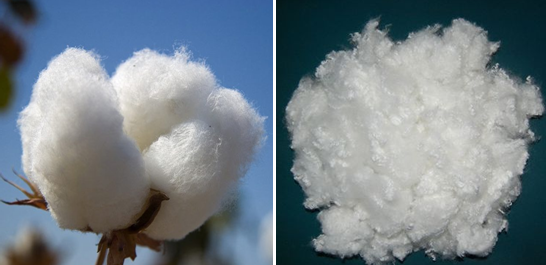Traditionally, fibers have been used in all cultures for making utilitarian products. Different parts of the plant are used. Fibers can be extracted from the bark (banana, jute, hemp, ramie), stem (banana, palm, bamboo), leaf (palm, screw pine, sisal, agave), husk (coir), seeds (cotton), and grass (sikki, madhurkati, benakati, munj). Animal fibers are obtained from a variety of animal coats, and insect fibers from cocoons.Even before the arrival of man-made fibers, manufacturers could create hundreds of different kinds of fabrics, differing mainly by fiber content, weight, style of weave, or sheen.
● Fiber is the smallest visible a substance which is extremely thin in relation to its width. If we classified the fiber, mainly found Two types of fiber.
》 Natural Fiber
》 Man Made Fiber
● NATURAL FIBER :
• Solar energy is the basis of life. The plants are produced by the combination of soil, H2O and solar energy. Petroleum and minerals are basic sources of fiber. Cellulose is the basic structural element of natural fiber whic are extracted from plants. It is formed through photosynthesis of carbohydrates by green plants form carbon dioxide using solar energy and water. This food is taken by animals and transformed into fiber forming proteins within animal body.Common natural fibers sourced from the plant kingdom include cotton, flax, hemp, bamboo, sisal, and jute.
• Natural fiber can be used for high-tech applications, such as composite parts for automobiles. Compared to composites reinforced with glass fibers, composites with natural fiber has advantages such as lower density, better thermal insulation, and reduced skin irritation. There are some disadvantages of its also, such as not very strong compared to synthetic fibers, heavy in weight, not wrinkle free.
● MAN MADE FIBER :
• Man made fibers were first created to improve upon natural fiber and categorized into two groups- regenerated and synthetic fibers.The first man made fibers to be produced were regenerated fibers such as viscose rayon in 1892 and cellulose acetate in 1918.These types of fibers are created by breaking down cellulose or wood pulp, then regenerating them by extrusion. On the other hand, synthetic fibers are produced from coal or oil, and include fibers such as acrylic, nylon, polyester, and spandex.
• Man made fiber are spun and woven into a huge number of consumer and industrial products, including garments such as shirts, scarves, and hosiery; home furnishings such as upholstery, carpets, and drapes; and industrial parts such as tire cord, flame-proof linings, and drive belts. The man made fibers retain their orginal shape so it’s easy to wash and wear. Generally,it’s very strong,soft and cheaper than natural fibers. Also different of colors are available as they are manufactured. Manmade fibres do not absorb sweat and trapping heat in our body,little difficult to sew, those are the disadvantages of this.
● If we distinguish between natural and manmade fiber, we can mainly find the below topics-
• No. of molecule
• Length and durability
• spinning process
• Uses of chemicals
• comfortable
• Limitations of uses
[Source : google & Textile learner]
Nazmul islam Nirob
Department of Textile Engineering
National Institute of Textile Engineering and Research
10th batch


